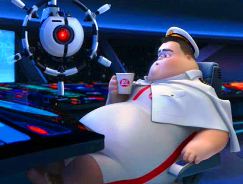Proprioception is our sense of where we are in space. It tells us about relative position of body parts, as well as giving us information about our movements. Proprioception is essential to how we move, how we are supported, and how we function. To be free from low back pain and other musculoskeletal injuries, and to be in good shape both require a conditioned proprioceptive sensory system.
This system can become deconditioned from a number of interrelated factors: lack of regular, challenging movement, previous or current injury, significant change in weight or strength, drug use and/or abuse, and chronically tight muscles.
The list above should tell you that many people today are deconditioned in their proprioceptive senses. From increased computer time (which means increased sitting), to changes in activity type (sports, music, art to more media driven activities like video games and computers), to poor diets and lack of movement, even from our advanced medical care that has people recovering from injuries that at one time my have been game-enders, people today need to think about their proprioceptive condition.
 In the next few video posts, I will be discussing and demonstrating excellent exercises for stimulating, and thus conditioning, your proprioceptive system. Although I usually prefer to give low-tech exercises, I really do think having access to some special equipment will be very useful here. The good news is that many gyms have the equipment you will need. If for any reason that is not an option for you, you can contact my West Hollywood sports chiropractic office to purchase either a rocker board, wobble board or bosu ball.
In the next few video posts, I will be discussing and demonstrating excellent exercises for stimulating, and thus conditioning, your proprioceptive system. Although I usually prefer to give low-tech exercises, I really do think having access to some special equipment will be very useful here. The good news is that many gyms have the equipment you will need. If for any reason that is not an option for you, you can contact my West Hollywood sports chiropractic office to purchase either a rocker board, wobble board or bosu ball.
Watch the video below for the first instruction on proprioceptive training: the short foot exercise. You will need to master this to go to the next level. I would practice the short foot exercise for one week before moving on to the next level. You will see that by mastering this movement, you will have the foundation for keeping your balance no matter what the challenge. Learn the short foot and have fun–I’ll see you soon for the next level.













